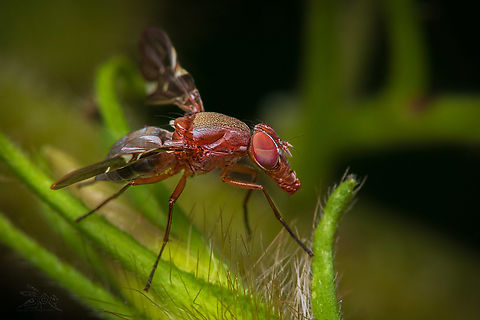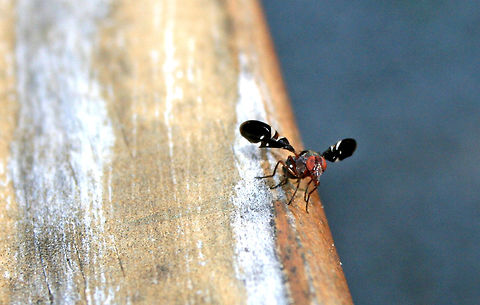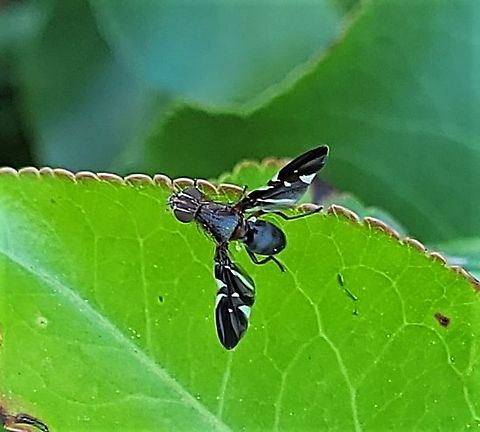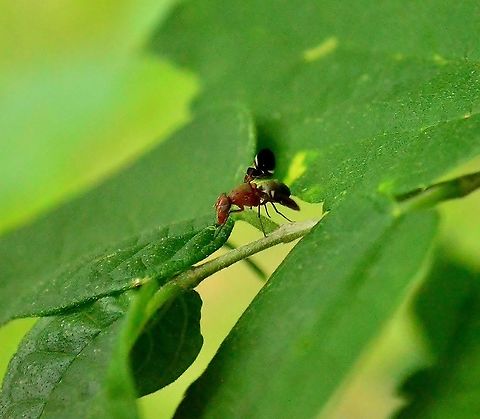
Appearance
The best way to identify the species is by the distinct pattern on its wings, which are shiny and dark brown with a hyaline background. Its body is about 7mm long with a black abdomen and a light brown head, thorax, and legs. The ovipositor averages 1.27mm long with two dorsal and one ventral prominent pairs of setae, as well as many short setae on both sides. The tip of the ovipositor also has a slight bend downward.
Naming
The specific name "picta" is from Latin and means "painted." It is the only species in the Monospecific genus Delphinia.
Behavior
Adults raised in the lab usually live less than 40 days, but can live up to 69 days.Mating takes place in the evening two days after emergence from pupae. The female will wave her wings gently and a male will respond by flicking his wings before copulation.
Courtship may also include one or more of the partners blowing a bubble from their mouth. Females will lay up to 500 eggs in decaying herbaceous plant matter, which then hatch into larvae in 4 to 6 days.
Larvae develop through three instar stages and reach pupae in 21–30 days then finish pupating 14–17 days later. The development is affected by the amount of daylight: "D. picta" is a multivoltine species with one generation going from May to July and the other overwintering as mature larvae.

Habitat
Among the plants it associates with are black locust, eastern cottonwood, and saw palmetto. It is prey for wasps, such as "Crabro monticola".References:
Some text fragments are auto parsed from Wikipedia.